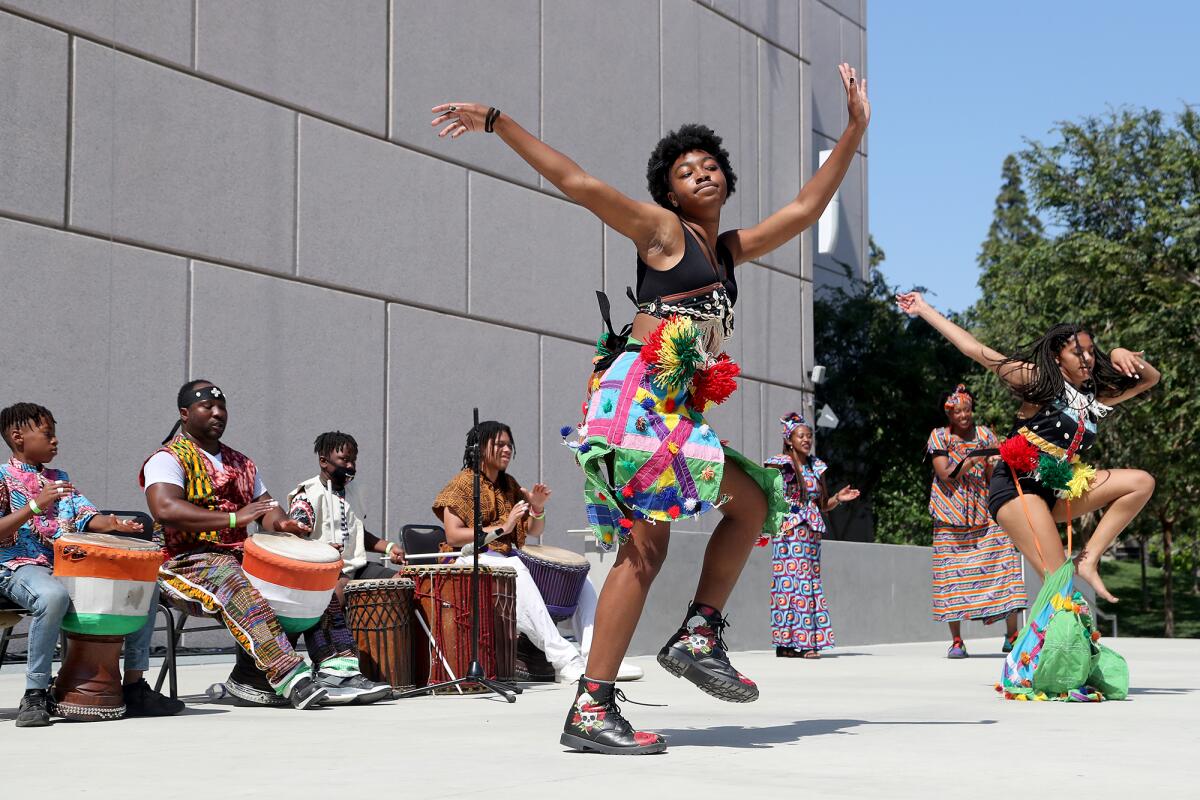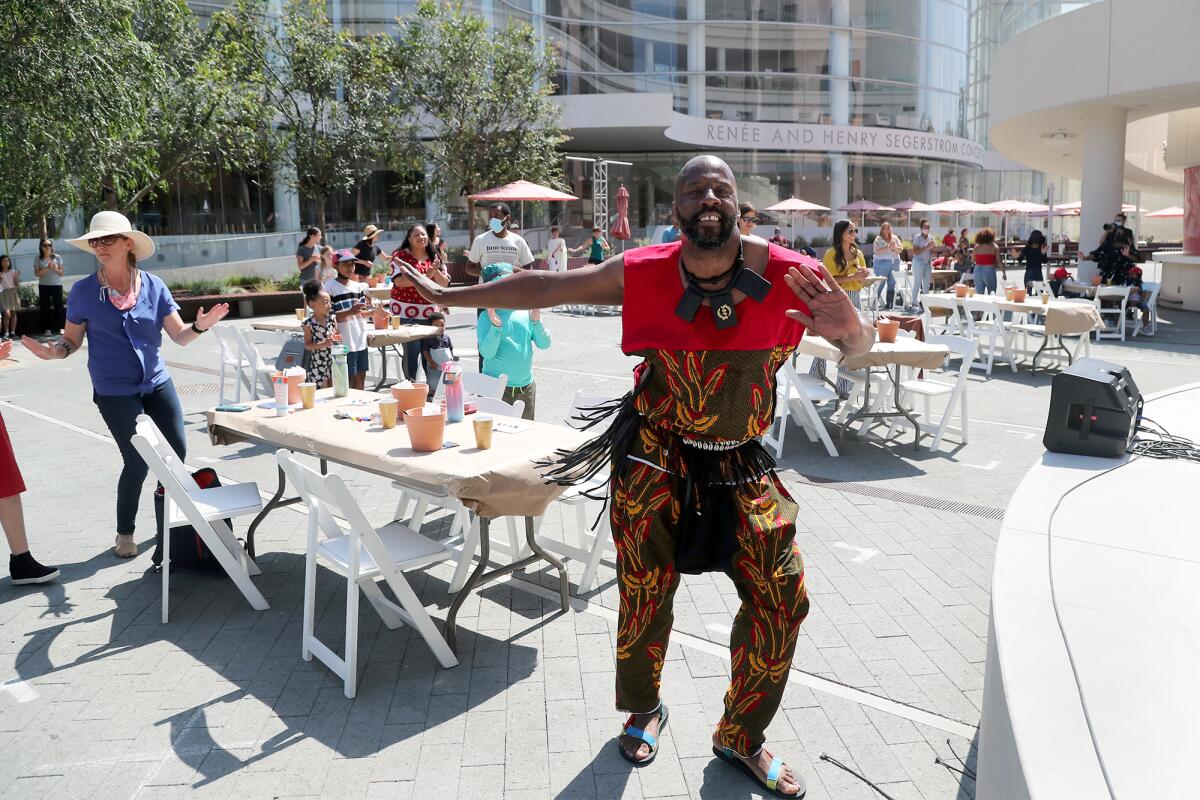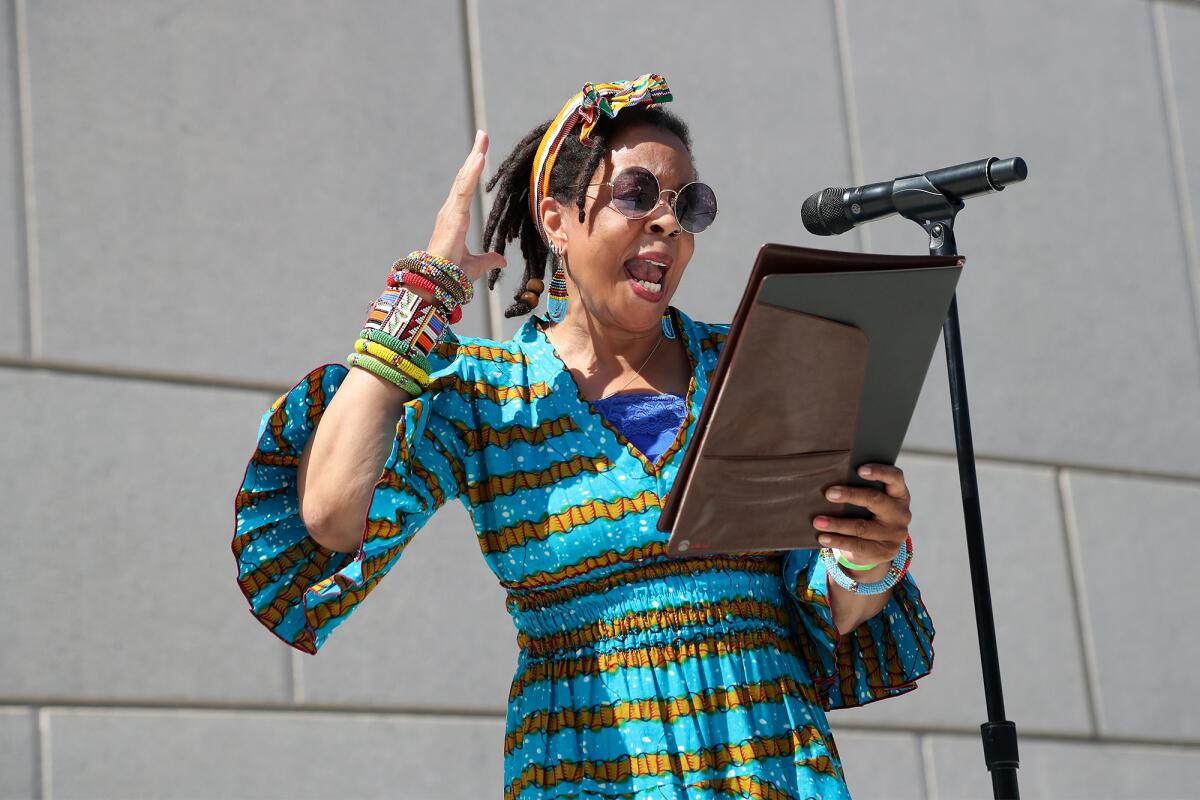Freedom in full bloom at inaugural Juneteenth fete at Segerstrom Center for the Arts

- Share via
Federal lawmakers this week officially commemorated the end of slavery in America, passing legislation declaring June 19 — the day in 1865 when enslaved Black people in Galveston, Texas, first learned from Union soldiers they had been freed — a national holiday.
Orange County residents on Saturday participated in an inaugural Juneteenth observance, as Segerstrom Center for the Arts partnered with the Institute of Black Intellectual Innovation of Cal State Fullerton to present “Freedom in Full Bloom: a Juneteenth Celebration.”

Held outdoors at the Costa Mesa’s Argyros Plaza, the event featured a range of activities and artistic performances celebrating Black innovation and resilience in music, poetry, visual art and gardening.
Dr. Natalie Graham, a Cal State Fullerton professor of African American Studies, launched the Institute of Black Intellectual Innovation with colleague Dr. Siobhan Brooks in December, following national protests calling for social justice reform and charges from Black students at CSUF they did not feel supported or included within the institution.
Working with Dr. Jamila Moore Pewu, a professor in the school’s history department, Graham curated the Segerstrom event as a welcoming and engaging space for Black people — who comprise only 2% of the county’s population but still total more than 55,500 individuals — within the wider community.
“My dream is to have Black people come together and experience joy and the joy of each other,” Graham said Friday. “I’d love for people to have fun, for it to be a fun, joyful time.”
Marytza Rubio, Segerstrom’s director of community engagement, said the center had hoped to honor Juneteenth in 2020, before plans were sidelined by the pandemic.
“During the Black Lives Matter uprising last year, many members of our SCFTA community were galvanized and ready to have honest conversations about the actions that arts organizations can take in shaping an anti-racist culture,” Rubio said. “This first Juneteenth at the center is part of an intentional effort to recognize, amplify, and support Black artists and communities in Orange County.”
Saturday’s festivities began with a performance by the Long Beach-based Dembrebrah West African Drum and Dance Ensemble. A pouring of libations ceremony, accompanied by a reading of poet Margaret Walker’s “For My People,” paid homage to those who came before.
Attendees painted quilt patterns reminiscent of those created by slaves to encode communications across the Underground Railroad onto gardening pots and were invited to take home African seeds to plant in Orange County soil.
“It’s kind of like the Black experience as a whole, about growing in the soil you’re planted in,” Moore Pewu said of the activity. “Many of us didn’t choose the soil we were planted in, yet we grow.”

The creative project corresponded with a talk by activist and author Trina Greene Brown, who spoke on “Planting for our Future and Parenting with Liberation.”
Moore Pewu said each activity was intended to create a point of reflection related to Juneteenth which, at its historical core, is both a solemn nod to the past and a hopeful look ahead.
“These were people of African descent, who were celebrating a new identity where they could not be property but could be Americans,” she said of the earliest celebrations. “Even now, we want to be able to mourn but also celebrate — I think Juneteenth lets us do both.”
Graham said while federal recognition of Juneteenth is an important symbol of advancement, it’s perhaps even more crucial to go beyond rhetoric about freedom in America and to commit to tangible forward growth.
“It’s very easy to notice symbols and symbolic progress and to assume progress has been made,” she added. “But there is still a lot of work to be done.”

All the latest on Orange County from Orange County.
Get our free TimesOC newsletter.
You may occasionally receive promotional content from the Daily Pilot.




